Biryani is like a religion in India. Yes, I know that I’ll be cursed like anything for this statement, but can’t really help it. We eat biryani if we’re happy- we eat biryani when we’re sad and even when we’re confused. And there lies the eternal fight that which one is the best variety in India- Kolkata or Hyderabadi? there are a lot many other varieties like Lucknow, Mopla etc, but these two wins because of the sheer numbers loved. And if some biryani brand claims to have sold more than 70,00,000 plates of biryani in one year and has secured a place in the records, then it’ll be foolish to judge it. We, from team foodka, were invited to inaugurate the Paradise biryani restaurant in Kolkata and I’ve gone there on my own afterward. This blogpost talks about those experiences. But to talk about Paradise biryani, please allow me to blabber some Gyan first.
Origin of biryani
The origin of Biryani is uncertain. In North India, it is traditionally associated with the Mughlai cuisine of Delhi and the Awadhi cuisine of Lucknow; in South India, it is traditionally associated with the Hyderabadi cuisine. The word “biryani” is derived from the Persian language. One theory is that it originates from “birinj”, the Persian word for rice. Another theory is that it derives from “biryan” or “beriyan” (to fry or roast).
Types of Biryani
There are two basic types of biryani: pakki (“cooked”, also pukka) and kacchi (“raw”, also kutchi). In pakki biryani, the cooked meat and cooked rice are layered. In the kacchi biryani, raw marinated meat is layered with semi-cooked rice before being cooked together. It is also known as kacchi yakhni. It is cooked typically with goat meat (usually ‘khasi gosht’, which is meat from castrated goats and often simply referred to as mutton) or with lamb, and rarely with chicken or beef.
The dish is cooked layered with the meat and the yogurt-based marinade at the bottom of the cooking pot and the layer of rice (usually basmati rice) placed over it. Potatoes are often added before adding the rice layer. The pot is usually sealed (typically with wheat dough) to allow cooking in its own steam and not opened till ready to serve. A boiled egg and mixed salad often accompany the dish. It is featured in wedding feasts in Bangladesh, usually served with burhani, a spicy drink. Kolkata biryani comes under the first (pakki biryani) type, whereas the Hyderabadi biryani comes under the second (Kacchi biryani) type. Hyderabadi biryani is cooked as the kacchi biryani. Raw meat is layered with rice cooked in 3 stages. And as per the layer, they’re distributed. Some mint leaves are thrown in and the use of a heavy masala/ spice is what makes the Hyderabadi Biryani different from the rest.
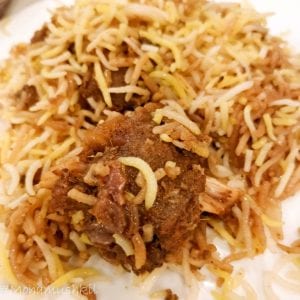
So, how is Hyderabadi biryani different from Kolkata biryani ?
The primary difference between Hyderabadi biryani and Kolkata styled biryani is that the former is a kacchi biryani, wherein Kolkata styled one is a pakki biryani. A kacchi biryani has raw meat layered with rice cooked in 3 stages. And as per the layer, they’re distributed. Some mint leaves are thrown in and use of a heavy masala/ spice is noticed. The biryani is distinctly different from the aroma of meat. Hence the choice of meat is of primary importance. Wherein, for the Kolkata styled biryani, the meat is semi-cooked and layered with semi-cooked rice.
This being apart from the existence of potato. The subtle balance is more important than spice and meat. This is something I could make out by meeting the biryani makers from Hyderabad and Kolkata. If you know of any other differences, please write in the comments section.
The ambiance at Paradise Kolkata
Paradise Biryani started in 1953 with a cafe and canteen near Paradise Theatre in Hyderabad and the Kolkata outlet is their 47th outlet. I’ve been to Hyderabad and tasted the Paradise biryani there and trust me, they have entire buildings dedicated to this item. But this outlet at Southern Avenue is not that grand. It’s a modest restaurant on southern Avenue. The parking facility is there on road and it’s closely connected via public transport. The long glass window adds to the aesthetics and basically, it’s a quick service place.
The menu is kept simple- just a few varieties of kebabs, biryani and just two curries- chicken and mutton curry …. and no bread items. Traditional Hyderabadi desserts are there- Khubani ka Meetha and Shahi Tukra.
Biryanis are priced around 250-300 per plate and the portion size is good (2 plates are good for 3 persons) and the price for 2 would be around 800/-.
Kebabs at Paradise Kolkata
I’ve tasted the Chicken Tikka Kebab and Chicken Chettinad Kebab. They come 8 pcs per plate and the taste is different. The spice quotient is definitely toned down from the Hyderabad counterpart, but they’re still good. Chettinad kebab is basically boneless chicken chunks, well marinated with southern spices including crushed curry leaves (probably) and charcoal grilled. Overall, if you’re hell-bent on trying something other than Biryani, then only go for it.
The curries were rather interesting and not the typical gravies that we’re used to. Maybe some amount of peanut was used and again some combination of Southern spices, but the semi-watery gravy was full of flavors. 2 pcs of meat came in each portion.
Biryani at Paradise Kolkata, finally …
Well, finally let’s talk about the biryani. It’s nothing like it’s Kolkata cousin. wherein the Kolkata biryani is more subtle and somewhat sweetish in nature, this one is more robust and full of flavors. the presence of Mint leaves is strongly felt and the meat quality is simply outstanding. Sadly, it’s not as spicy as the Hyderabadi one and I was told by the management that it’s done like that intentionally to suit Kolkata palate. One small bowl of Raita and Mirch Ka Salan is given with Biryani. While the Raita is watery, Salan is fantastic and actually complements the biryani. Both the chicken and Mutton Biryanis came with two pcs of meat.
I’m sure that you’re not expecting the so-typical aloo in this variety and they don’t serve it either. And let me tell you, the taste is fantastic. I like spicy food and have an affinity towards the food of the southern part of the country and thus ….. As the meat is cooked along with the rice, the rice was full off meaty flavor. And to top it all, Biryani at Paradise Biryani Kolkata has a nice aroma of ghee …..
The Shahi tukra was average … or was it the superb biryani- we’re not very sure, It’s very dry, as compared to the Kolkata counterpart and didn’t really suit my palate. But I can assure you of one thing- I’ll go back again for the Biryani at Paradise Biryani Kolkata and that’s for sure.
Bon apetit !!!
I can be reached at 9903528225 / indrajit.lahiri@ymail.com
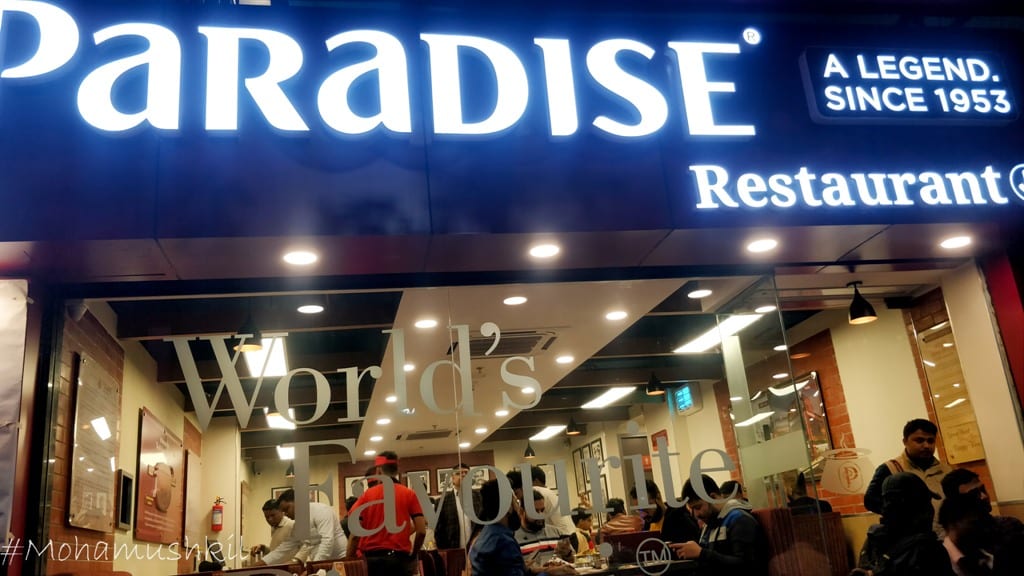

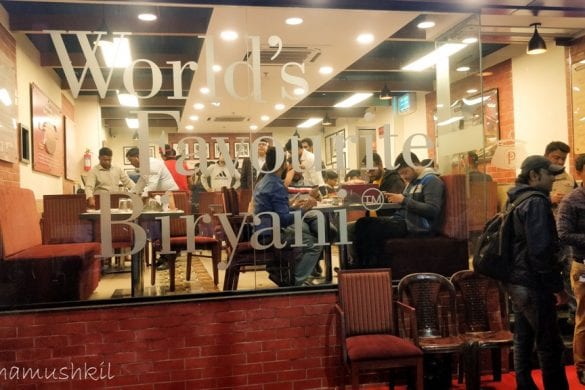




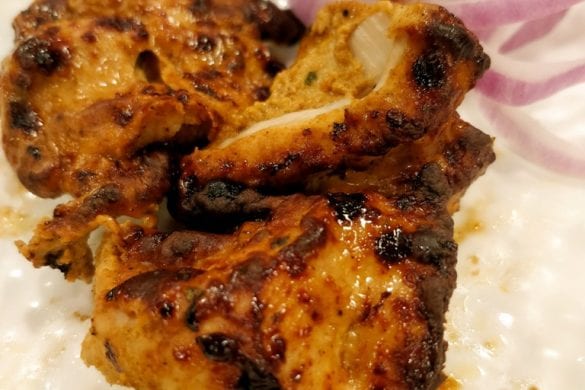
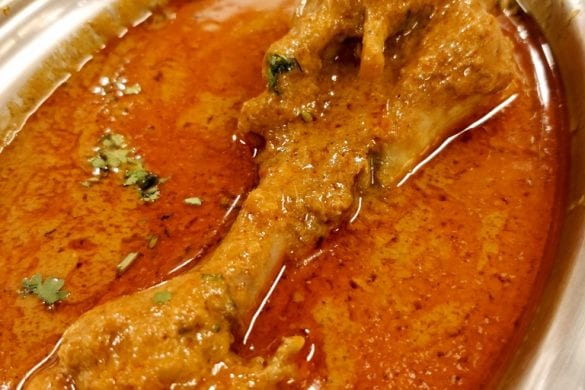
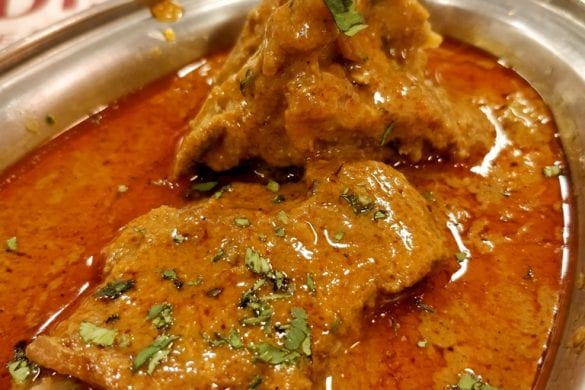


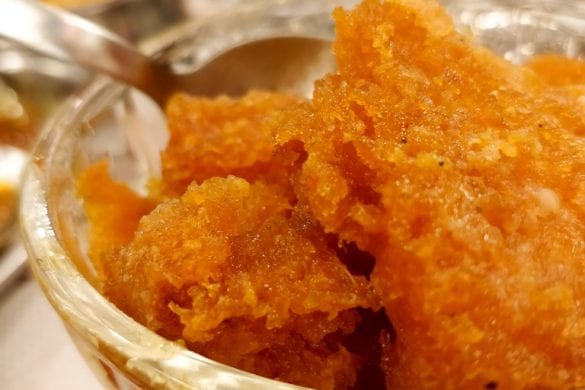
6 comments
অপেক্ষা করেছিলাম.. paradis এর review এর.. Thank you 😊
In kacchi biryani, if raw meat is layered between semi cooked rice for cooking then after the process, the rice will be overcooked and the eat will remain undercooked! That’s the law of physics. I am being curious. 😊 Can someone please explain the method of cooking?
just for curiosity, when did this Paradise outlet open in Kolkata?
January 2020
I dont think its a great idea to tinker around with the authentic taste to suit the Kolkata palate… One would expect that spicy falvor of Biryani from Paradise. I mean, if I want some lesser spicy Biryani. I would rather go for Arsalan, Aminia or Shiraz, who are the masters of that version rather than try Paradise. Stick to your USP, buddy!!
Rightly said.. we eat Biryani on all occasions.. whether we are happy, sad or just like that 🙂